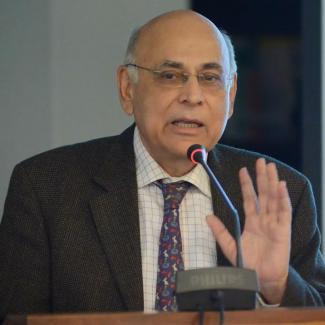Microcredit and microsaving for microenterprises in Pakistan
Microfinance remains an important and pressing issue for research in developing economies. Traditionally, it was believed that microlending is an effective way to encourage entrepreneurship, particularly among groups of female borrowers. But several recent studies have cast doubt on that conclusion – suggesting instead that microloans are unlikely to have dramatic benefits, and that their greatest value may lie in ‘second-order’ considerations (for example, through improved consumption smoothing and insurance).
These recent findings have spurred researchers’ interest in the prospects for improving savings products – rather than loans products – as a means of extending financial services to the poor. But to understand how savings products can be improved for the poor, we need to understand several important issues: Why don’t the poor save more? How does household behaviour change when the household is a debtor, rather than a creditor? Can better microfinance products be developed to facilitate saving? Can such products be developed in a way that is financially viable for a lender? These are the questions that we aim to answer in this research project, through the introduction of a novel financial product.
The starting point for the design of the product is the observation that rotating savings and credit associations (ROSCAs) are common everywhere in the developing world, where they seem to have developed independently. ROSCAs are known to be used by consumers to purchase durables, and by small entrepreneurs to save for recurrent business expenditures, such as paying suppliers. In some countries agents have begun offering ROSCA-like contracts to individuals, but without the need for forming a group. These agents, known as susu collectors in Ghana for instance, operate de facto as small financial intermediaries, albeit largely outside the formal financial sector.
In this project, we test the acceptability and usage by small entrepreneurs of ROSCA-like financial products offered by a rural bank. We are running a randomised controlled trial to test demand for such products – and, specifically, to test (i) sensitivity of demand to whether the product offers saving or lending, (ii) sensitivity of demand to the interest rate, and (iii) effects of being offered the product on firm assets, savings and profits.
Specifically, we are working with the National Rural Support Programme (NRSP) to implement a novel microfinance product in Bhakkar and in Chakwal, among NRSP microfinance clients who are running a business. The experimental design is simple. Every seven weeks, each treated participant is offered one of six different microfinance contracts, where the type of contract offered is determined by the random draw of cards. Thus, we exploit the structure of a ‘one-off lottery random ROSCA’, implemented on an individual basis. These contracts differ by (i) timing of lump sum payment and (ii) interest rate. Lump sum payments of are either made in week 1 or week 6; in all other weeks, each respondent pays a sum of 1000 rupees. The lump sum payment is either 4500 rupees (that is, a negative interest rate), 5000 rupees (zero nominal interest rate) or 5500 rupees (positive interest). We will randomly choose 60% of respondents to be in the ‘treated’ group. Members of this group will receive three offers: an initial offer, then another offer after seven weeks, then a final offer after 14 weeks. Members of the control group receive no offers. We will conduct an endline survey of all respondents in February 2015, to test the effects of this product on microenterprise saving and performance.






